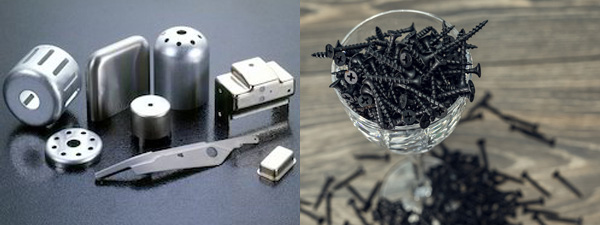Chemicals
Electroplating Chemical
Pioneers in the industry, we offer Zinc Plating Chemical and Copper Sulphate Chemical from India.

Zinc Plating Chemical
The use of Zinc plating is rapidly increasing for rust protection and decorative applications. This is primarily due to a rise in the cost of Nickel metals and increasing restrictions towards using toxic Cadmium in desired applications. Zinc tends to provide a more uniform thickness, does not fill up holes or obliterate threads. It also conserves heating energy to a great extent. Thus, Zinc is an ideal replacement for hot dip galvanizing where high precision is desired. The latest developments of Zinc alloy plating in the conjugation of certain passivation bestow extremely high corrosion resistance to the deposited coating which even surpasses the service life of traditional Nickel Chrome deposits.
Anodising
Anodising is an electrochemical process that produces an aluminium oxide coat on the surface. The product to be coated acts as an anode in an electrolytic cell. It effectively enhances wear resistance and aesthetic appeal.


Pretreatment Chemicals
Phosphate coatings are predominantly applied to ferrous metals. Additionally, it is also used on Zinc and Aluminium for specific applications. These coatings, on their own, are not enough to protect the treated metal surfaces. Their advantage lies in pre-treatment before painting, powder coating, impregnation with enamels, lacquers, oils and waxes.
The coating is thin and adherent to the substrate metal whilst being porous and insulating. As a result, the coating permits “keying” or mechanical interlocking of the applied paint film. In addition, the electrical inertness of the coating localises corrosion under the adjacent unbroken painted areas of the base metal surface. Phosphate coatings may be produced by immersion, brush and spray since surface conversion depends only on contact between substrate and phosphating solution. These coatings are also used in cold forming operations such as drawing, stamping and cold extraction processes.
Surface Conditioning
Pre-cleaning, either using solvent emulsion degreasers or heavy-duty soak cleaners, removes the heavy accumulation of soil such as oil, grease, buffing compounds, and drawing lubricants. This cleaning is carried out through immersion, electrolytic or spray cleaners.
To obtain a ‘water break-free’ surface, substrates are often further cleaned using industrial detergents with or without the help of electrolysis.


Nickel Plating Chemical, For Industrial
Electrolytic Nickel Plating, the backbone of the plating industry, is extensively used all over the world for decorative and corrosion resistance applications. It is often used as an undercoat to provide a bright and levelled surface before plating precious metals. Improvisation over the years with special additives has made the system highly versatile and job oriented.





